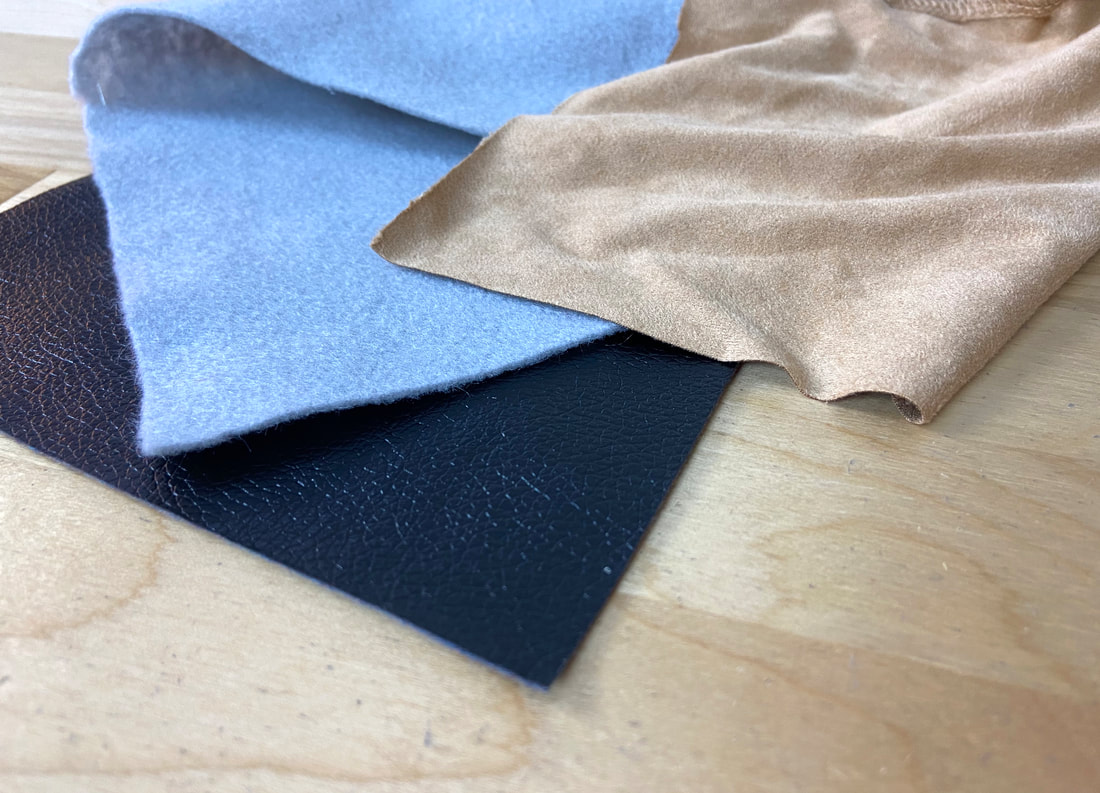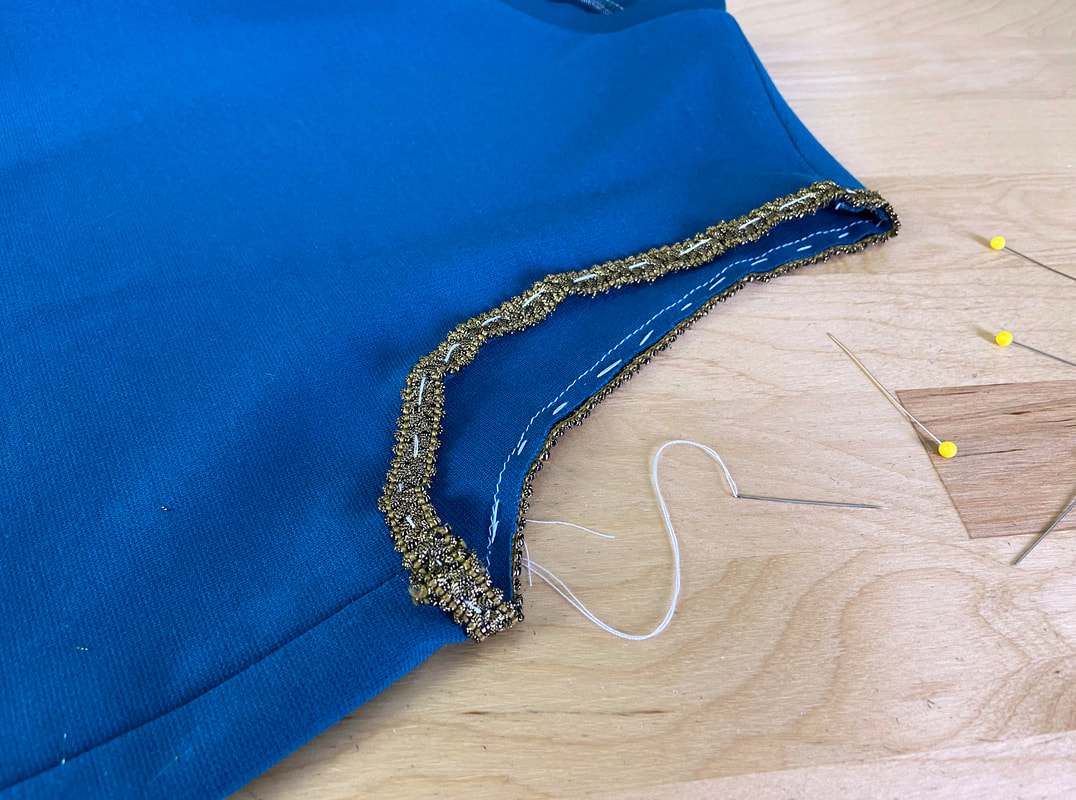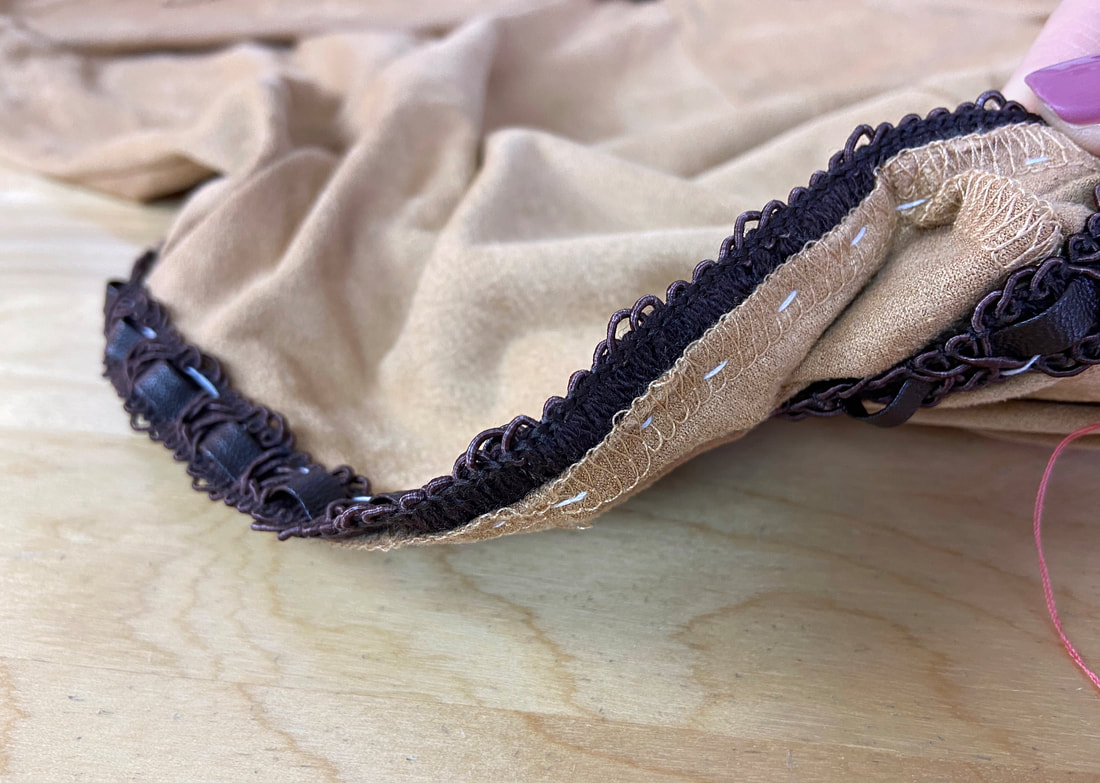When To Use Decorative Trim To Finish Armhole Edges
If you love mixing functionality with design, using a decorative trim to clean-finish armhole edges may be the perfect dressmaking technique for you. Not only is this method simple to apply, it also becomes a big part of the garment's visual design.
Keep in mind that using decorative trim to finish garment edges does not work with all fabrics and all garment styles. Fabric, in particular, is an important element to consider.
Instead of fully encasing the armhole's raw edge, as most conventional finishes do, a decorative trim is used to simply hide the edge from the garment's right side. For that reason, this techniques works best with low-fraying or no-fray fabrics that maintain their structure and strength when cut. Examples of such fabrics include: suede, leather, and heavier knits like ponte and scuba knit.
If a fabric is prone to stretching and heavily unraveling when cut, a decorative trim is often not enough to guarantee long term structure and strength. Since the garment's armhole areas incur a lot more heavy movement during wear, these edge should be properly stabilized.
Instead of fully encasing the armhole's raw edge, as most conventional finishes do, a decorative trim is used to simply hide the edge from the garment's right side. For that reason, this techniques works best with low-fraying or no-fray fabrics that maintain their structure and strength when cut. Examples of such fabrics include: suede, leather, and heavier knits like ponte and scuba knit.
If a fabric is prone to stretching and heavily unraveling when cut, a decorative trim is often not enough to guarantee long term structure and strength. Since the garment's armhole areas incur a lot more heavy movement during wear, these edge should be properly stabilized.
If the fabric does not fray when cut, you can simply align and stitch the trim to the armhole edge as needed. However, it is highly recommended that you staystitch the armholes' raw edges prior to aligning the trim, as this will stabilize and strengthen the edge both during the construction process and in the finished garment.
Staystitching should be applied such that when the trim is finished, the stitch is fully hidden underneath, and not visible on garment's right side.
Staystitching should be applied such that when the trim is finished, the stitch is fully hidden underneath, and not visible on garment's right side.
If working with fabrics that are low-fraying but require further stabilization (additional to a staystitch), encase the armhole's raw edges with a serging or zigzag stitch prior to attaching the trim. Overedge stitching adds another layer of durability and structure to the garment's finished armholes.




